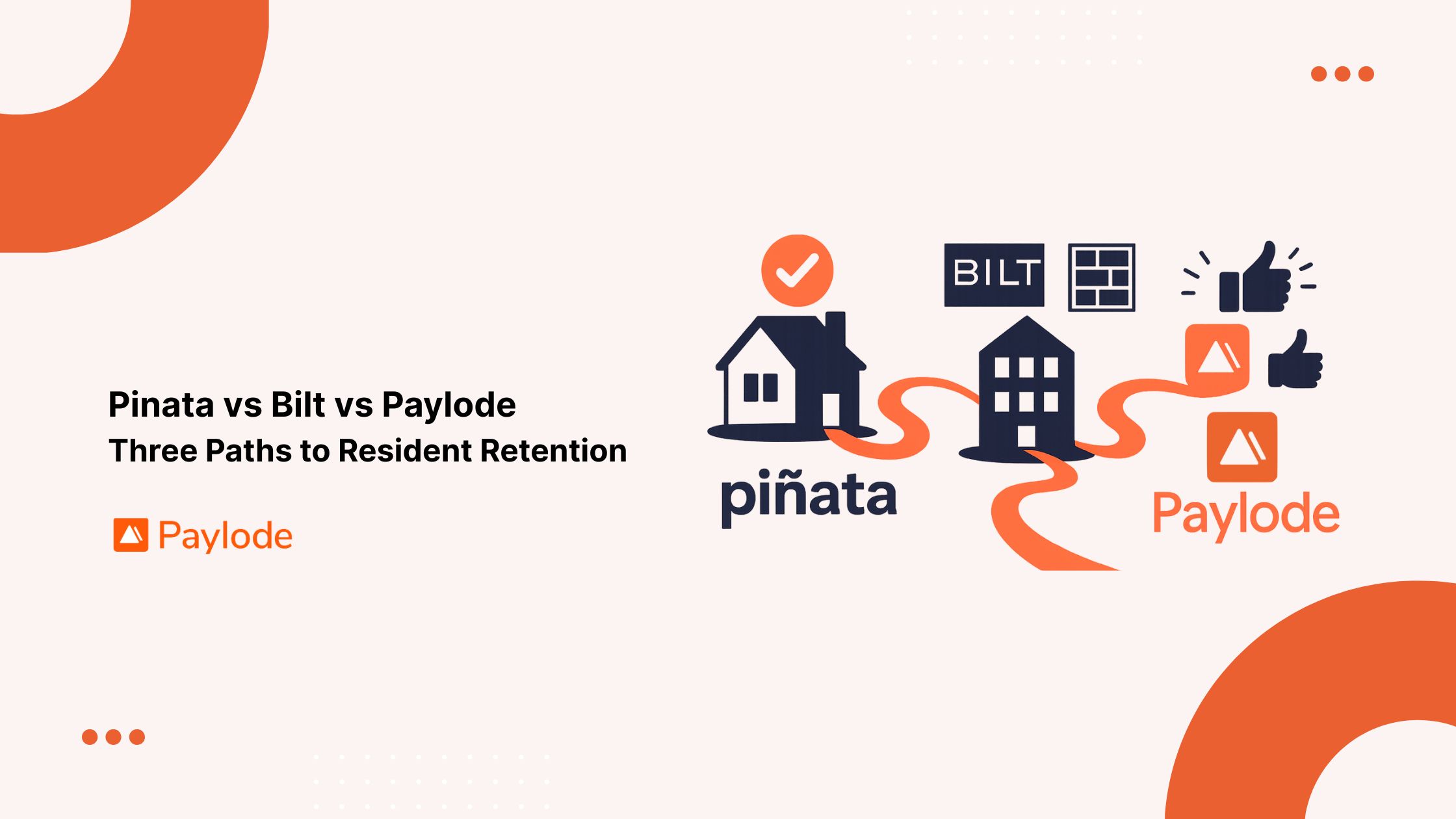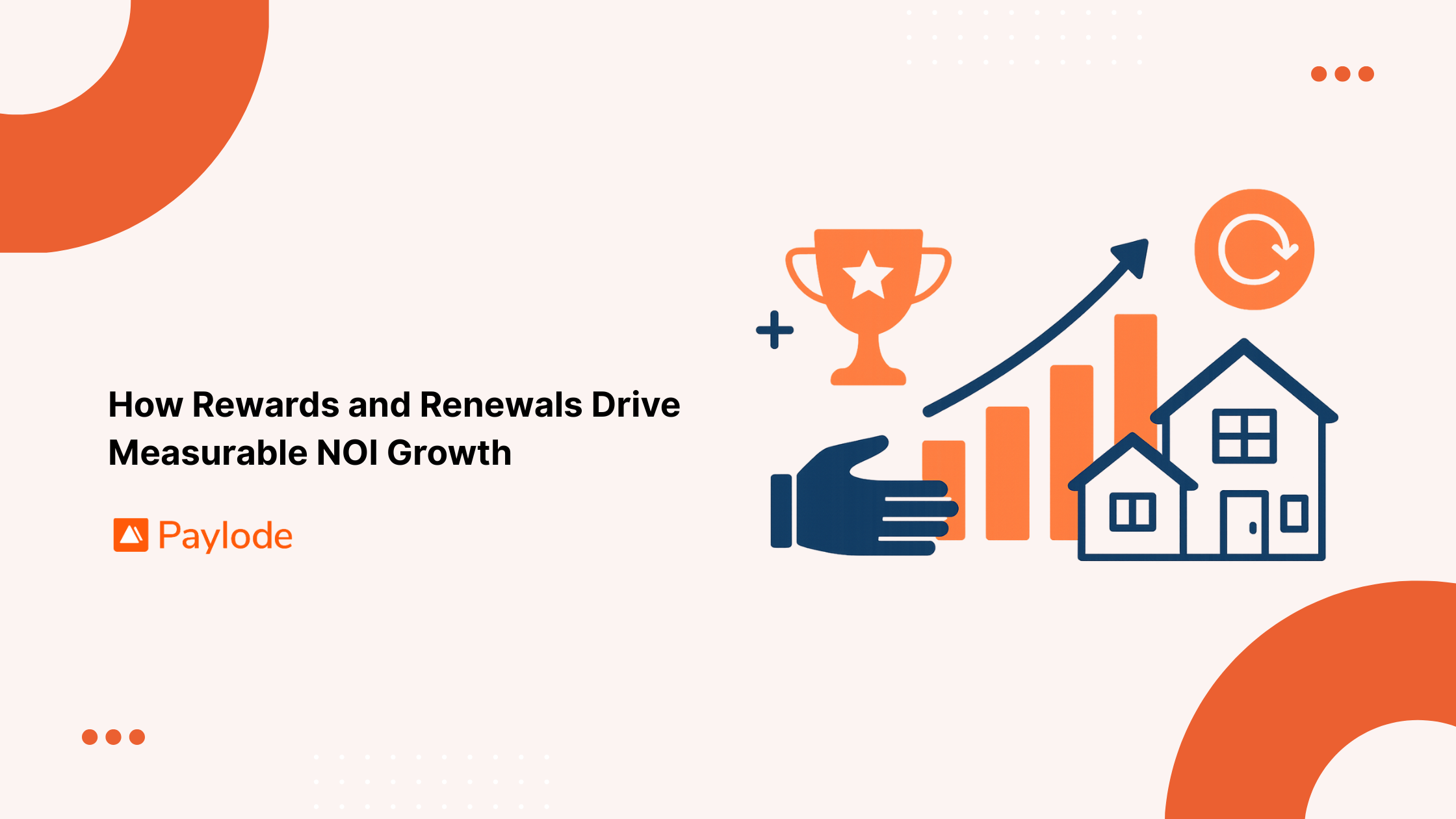The Single-Family Rental (SFR) market has grown rapidly, but so have the operational challenges that come with managing distributed portfolios. With properties spread across cities, states, and regions, operators face rising administrative workloads and increasing pressure to maintain consistent resident experiences.
Automation is now one of the most effective ways to streamline these operations. From rent payments to renewals, SFR automation reduces manual tasks, lowers the risk of missed communication, and ensures residents receive timely reminders and clear instructions. This not only improves efficiency but also supports predictable revenue and stronger NOI performance.
As expectations around digital experiences continue to rise, automated rent payments and renewals help SFR operators stay competitive—delivering convenience for residents and stability for operators.
1. The operational challenges unique to SFR portfolios
Managing Single-Family Rental (SFR) properties is very different from managing multifamily assets. SFR portfolios are often spread across multiple neighborhoods, cities, or even states, making it difficult to maintain consistent operations and communication. This distributed nature increases the workload for property managers and reduces efficiency.
Rent payments, delinquency follow-ups, and renewal coordination become more time-consuming when teams cannot rely on in-person interactions or centralized processes. Each property requires its own touchpoints, and without automation, teams spend significant time sending reminders, chasing payments, and managing renewal paperwork.
SFR operators also face rising expectations from residents who want digital, self-service experiences. When payment processes are manual and renewals require multiple steps, residents become frustrated—and operators risk late payments, missed renewals, and higher turnover. These operational challenges make automation essential for scaling SFR portfolios efficiently.
2. What SFR automation looks like today
SFR operators are increasingly adopting digital workflows to streamline rent payments, reminders, and renewals. Modern SFR automation replaces manual processes with automated, scheduled, and personalized communication that reaches residents exactly when action is required. This helps operators maintain consistency across distributed portfolios without increasing workload.
Automation typically includes features like autopay enrollment, scheduled payment reminders, late-fee notifications, renewal triggers, and self-service digital forms. These tools make it easier for residents to stay on track while giving operators reliable, real-time visibility into their payment and renewal pipeline.
By reducing friction for both teams and residents, automation improves accuracy, reduces delinquency, and increases satisfaction. It also ensures every resident receives the same high-quality experience, regardless of where the property is located.
3. Why SFR incentives accelerate automation adoption
While automation streamlines workflows, residents often need an extra push to adopt new behaviors—especially when it involves switching to autopay, enabling paperless billing, or completing renewals digitally. This is where SFR incentives play a powerful role.
Incentives such as merchant-funded perks, fee credits, or move-in savings help residents feel rewarded for taking key actions. Merchant-funded perks are especially valuable because they cost operators nothing while providing residents with real financial benefits on everyday essentials, groceries, dining, and lifestyle services.
These incentives create positive reinforcement, helping residents adopt digital processes faster and more consistently. When residents activate autopay or complete renewal steps in exchange for a perk, operators benefit from fewer late payments, fewer manual follow-ups, and higher overall compliance.
4. The financial impact: How automation reduces cost and increases NOI
Automating rent payments and renewals delivers measurable financial benefits for SFR operators. When teams spend less time on manual tasks and residents have a smoother digital experience, operators gain operational efficiency, predictable revenue, and stronger NOI.
4.1 Lower operational workload
Automation replaces labor-intensive tasks such as payment reminders, renewal follow-ups, and documentation handling. This reduces administrative hours and allows teams to focus on higher-impact responsibilities like maintenance quality, resident relationship-building, and minimizing vacancy.
4.2 Fewer late payments and delinquency
With autopay reminders, scheduled notifications, and incentive-driven adoption, operators see consistent reductions in payment delays. On-time payments improve cash flow and reduce risk, which is especially valuable across distributed SFR portfolios.
4.3 Lower vacancy cost from automated renewals
Automated renewal workflows help ensure every resident receives timely, personalized renewal prompts. This reduces the risk of missed renewal windows and minimizes month-to-month turnover, which directly supports stronger occupancy and predictable income.
4.4 Higher resident satisfaction
Residents appreciate digital convenience paired with perks that offer real value. When routine actions—like paying rent or renewing a lease—are rewarded, the overall living experience improves. This leads to stronger engagement and higher resident lifetime value (LTV).

5. How Paylode enables automation for SFR portfolios
Paylode helps SFR operators streamline payments, renewals, and resident engagement through a combination of automation, incentives, and a branded experience. By pairing technology with merchant-funded perks, Paylode gives operators scalable tools that improve consistency and drive measurable NOI growth.
5.1 Automated rent payment adoption with incentives
Paylode uses merchant-funded perks to motivate residents to enroll in autopay, switch to paperless billing, and maintain on-time payments. These incentives deliver real financial value while costing operators nothing, enabling faster adoption of digital processes across SFR communities.
5.2 Renewal workflows powered by Boost
Paylode Boost automates every step of the renewal process—sending reminders, prompting residents to take action, and distributing perks based on engagement milestones. This reduces manual follow-ups and ensures consistent communication across a widely distributed SFR portfolio.
See how Boost automates resident touchpoints
5.3 White-label perks center for unified SFR engagement
Paylode’s white-label perks center integrates seamlessly with portals, apps, and CRM systems. It gives SFR operators a consistent engagement layer across all markets, helping residents explore perks, redeem offers, and stay involved with their community.
Explore the white-label solution
6. Real SFR use cases where automation makes an immediate impact
SFR operators consistently experience operational and financial improvements when automation and incentives work together. These real-world scenarios highlight how digital workflows and merchant-funded perks reshape resident behavior, reduce workload, and strengthen NOI.
Use Case 1: Autopay adoption increases with incentives
Many residents hesitate to enroll in autopay without a tangible benefit. When operators offer a perk—such as a grocery discount or household essentials reward—autopay adoption increases quickly. This results in more predictable cash flow and fewer late payments across the portfolio.
Use Case 2: Faster renewals through automated sequences
Automated renewal reminders reach residents across multiple channels at the right time. When paired with SFR incentives, residents are more likely to complete their renewal early, reducing month-to-month leases and vacancy risk.
Use Case 3: Reduced delinquency in distributed portfolios
Consistent payment reminders and automated follow-ups help reduce delinquencies even in remote markets where on-site staff is limited. Incentives reinforce timely payment habits, leading to fewer escalations and service issues.
Use Case 4: Improved engagement for residents in low-touch environments
SFR tenants often have less face time with property managers. A perks-driven, digital engagement approach helps operators maintain relationships, improve satisfaction, and encourage renewal loyalty—even with minimal in-person interaction.
7. Key metrics SFR operators should track
To understand the full impact of automation and incentives, SFR operators should monitor a set of key performance metrics that reflect operational efficiency, resident engagement, and financial return. These indicators help quantify improvements and guide future optimization.
Autopay enrollment rate
Measures how many residents have adopted automated payments. Higher enrollment leads to fewer late payments, reduced delinquency, and more predictable cash flow.
Late payment reduction
Tracks improvement in payment timeliness after implementing automated reminders and SFR incentives. This metric directly affects operational workload and revenue consistency.
Renewal rate uplift
Shows how automation and perks influence renewal decisions. Even small percentage increases in renewal rates significantly reduce turnover costs across distributed SFR portfolios.
Perk redemption for automation tasks
Indicates how effectively residents respond to incentives tied to autopay, paperless billing, or early renewal completion. High redemption rates correlate with stronger engagement.
Cost savings per renewal
Reflects reductions in vacancy loss, marketing costs, and administrative hours due to automated renewal workflows.
NOI improvement percentage
The ultimate financial metric—capturing the combined effect of automation, incentives, and operational efficiency on portfolio profitability.
Conclusion
As Single-Family Rental portfolios continue to scale, operators need tools that reduce manual work, standardize communication, and improve the resident experience—no matter where their homes are located. Combining SFR automation with SFR incentives offers operators a powerful, low-cost way to achieve all three.
Automation ensures timely reminders, consistent workflows, and predictable revenue. Incentives motivate residents to adopt digital processes, pay on time, and renew early. Together, they reduce operational friction, strengthen resident satisfaction, and support long-term NOI growth across distributed SFR portfolios.
Paylode makes this approach simple by pairing automation with merchant-funded perks and a consistent engagement experience. For SFR operators looking to reduce workload and increase renewals, the opportunity is straightforward: automate where possible and reward key resident behaviors to maximize results.
FAQs
1. What is SFR automation?
SFR automation refers to digital tools and workflows that automate rent payments, reminders, renewals, and resident communication. It helps operators manage large, distributed portfolios more efficiently while reducing manual tasks and improving the resident experience.
2. How do incentives help residents adopt autopay?
SFR incentives—such as merchant-funded perks or fee credits—give residents a meaningful reason to enroll in autopay. These incentives increase adoption, reduce late payments, and improve cash flow without adding cost to the operator.
3. Can automation reduce delinquency rates in SFR portfolios?
Yes. Automated reminders, scheduled notifications, and autopay enrollment significantly reduce late payments and missed deadlines. When paired with incentives, delinquency rates drop even faster across distributed SFR homes.
4. How do perks improve SFR renewal outcomes?
Perks reward key renewal behaviors, such as early renewal submission or consistent on-time payments. These perks drive higher resident engagement and loyalty, helping operators reduce vacancy loss and turnover costs.
5. Does automation reduce the workload for SFR property managers?
Absolutely. Automation handles repetitive administrative tasks - like reminders, follow-ups, and renewal workflows—allowing property managers to focus on maintenance, resident relationships, and operational performance across multiple regions.



.jpg)